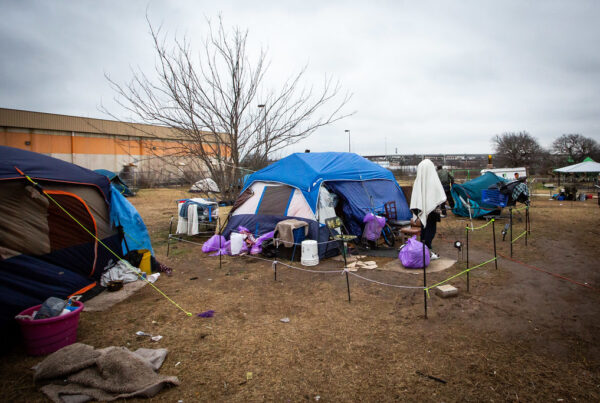Across the state, thousands of abandoned oil wells remain unplugged despite being out of service. Those wells, over time, have the potential to leak oil and toxic byproducts of the drilling process, threatening water supplies.
The state has received millions in federal funding to close up these so-called “orphaned wells,” yet the backlog keeps growing.
James Osborn, Washington bureau reporter for the Houston Chronicle, shared more with the Standard.
This transcript has been edited lightly for clarity:
Texas Standard: Can you give us an idea of the scope of the problem when it comes to orphan wells?
James Osborn: I mean, no one’s entirely sure, because, you know, they’ve been drilling for oil in this country, in Texas in particular, for a century now. And a lot of this stuff wasn’t really well mapped at the beginning. But, you know, it’s hundreds of thousands of wells, if not a million, that are lying out there that were just either abandoned by their owner or the company went bankrupt and were never properly sealed up.
When you’re done with an oil well – usually at some point it’ll stop being useful, and it only produces so little oil it’s not worth maintaining – usually at that point you fill it with cement. But not everyone does that, and companies in financial trouble, sometimes they just walk away from it and leave it for future generations to have to worry about.
So I guess the process of plugging these wells is supposed to be overseen by the Railroad Commission, which many Texans know does not regulate railroads, but in fact oil and gas. So how does the Railroad Commission go about this?
Well, they have a list – and it’s not a complete list, they’ll tell you – but they have a list of wells that there is not an active oil company that owns them, but they’re aware of and in need of a plug. And they go about plugging these wells, and they have been for a number of years.
I mean, the State of Texas has plugged more oil wells than any state in the country by quite a wide margin. They pay for it. You know, this is expensive; it’s a lot of money to plug these wells. It can cost millions of dollars in some cases. And they’d pay for this with fees from oil companies, for the most part.
But a couple of years ago, Congress put some money aside – quite a bit of money, as you said – for this. And now they have this big stream of federal money that’s supposed to help this process along.
» GET MORE NEWS FROM AROUND THE STATE: Sign up for Texas Standard’s weekly newsletters
Now, was that earmarked specifically for these environmental reasons? What was supposed to happen, and what is happening?
It was it was part of a pretty big piece of legislation to address infrastructure in this country at large, from roads to bridges to airports. And this was something that had been on certainly some Texas congresspeople’s minds, and others in Congress as well, as a problem that this country just hadn’t done a very good job of dealing with.
You know, if you have one of these things on your property, in some ways it’s sort of like a ticking time bomb. You don’t know when, but at some point something could change in the underground geology – and then all of a sudden you have this mix of oil and briny water coming to the surface. It will destroy the landscape, kill animals, wreck your land. I mean, if you’re a cattle rancher, this is absolutely something you don’t want on your property.
Well, you mentioned Texas has plugged more of these than any other state – I suppose some of that just has to do with the number of oil wells in Texas to begin with. But you say even after this influx of of federal funding, the backlog has continued to grow. What accounts for that?
It’s hard to say, exactly. But some of these are old wells they come upon they didn’t know about. A lot of it is just the ups and downs of the oil market. When oil prices go down, companies go bankrupt, and you end up with more of these abandoned wells that then end up on the books. So it’s sort of like a constant game of like catchup.
I mean, the Texas Railroad Commission was for a number of years doing about 1,400 wells a year, but they were often adding new wells to the list well beyond that number. So even though they were doing a lot of plugging it, they just couldn’t catch up with the problem.
The hope was that this federal money would boost them. But when we went back and looked at the most recent count, for November, the numbers are actually higher than when the federal money first started flowing back in August 2022.
So has the Railroad Commission laid out any plan for tackling this backlog?
No. It’s interesting. In their minds there’s a legislative target, as they say, and they’re meeting it, and they’re happy with how they’re doing.
If you dive into the numbers as we did, you’ll see that this year and next, they’re planning to plug about 2,100 wells each year. But the majority of that is being paid for with federal money. Now, before that federal money started flowing, they were doing about almost 1,400 wells a year. So they’ve they’ve actually decreased the amount of funding that the state itself is putting into this.
So if they’d kept their budget level, which they didn’t, they would be doing more wells and potentially keeping ahead of this.












